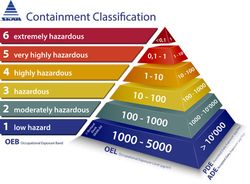
OR WAIT null SECS
- About Us
- Advertise
- Contact Us
- Editorial Info
- Editorial Advisory Board
- Do Not Sell My Personal Information
- Privacy Policy
- Terms and Conditions
© 2025 MJH Life Sciences™ , Pharmaceutical Technology - Pharma News and Development Insights. All rights reserved.
Industry experts weigh in on FDA’s Quality Metrics program
Quality metrics are used by FDA and by bio/pharma companies to evaluate manufacturing and fuel continuous improvement efforts.
As FDA has noted, the same quality metrics used by the bio/pharmaceutical industry to evaluate manufacturing and fuel continuous improvement efforts “can also be useful to FDA: to help develop compliance and inspection policies and practices, such as risk-based inspection scheduling of drug manufacturers; to improve the Agency’s ability to predict, and therefore, possibly mitigate, future drug shortages; and to encourage the pharmaceutical industry to implement state-of-the-art, innovative quality management systems for pharmaceutical manufacturing.” This potential was highlighted in FDA’s most recent draft guidance on this topic (1).
FDA’s Quality Metrics program for pharmaceutical manufacturing is clearly a work in progress, and FDA’s November 2016 revised draft guidance, Submission of Quality Metrics Data, calls for a voluntary reporting phase through which “FDA expects to learn more about a limited set of quality metrics, associated analytics, and improve the FDA quality metrics reporting program” (2).
Operational excellence programs at many manufacturing facilities already measure, review, and implement metrics, and “developing synergistic quality metrics that will have wide-ranging acceptance by the industry makes tremendous sense,” wrote Thomas Friedli, professor of management at the University of St. Gallen’s Institute of Technology Management, and consultant Prabir Basu in the 2016 CPhI Annual Industry Report (3). Friedli, Basu, and Nuala Calan of the Dublin Institute of Technology are working on an FDA-funded quality metrics research project that was awarded to the University of St. Gallen in July 2016.
The research involves using the group’s database as a scientific basis to propose potential quality metrics, explains Friedli. The three initial metrics to be collected by FDA do not adequately reflect a company’s internal processes, and other key indicators are needed, said Basu in an interview with Pharmaceutical Technology published in January 2017 (4).
“Companies need to review and analyze the information the FDA is asking for, as well as other metrics they are collecting, and identify potential problem signals so that they can solve issues and self-correct before regulatory inspections,” adds Sue Schniepp, distinguished fellow at Regulatory Compliance Associates.
The metrics that FDA will collect are not primarily intended to help individual companies achieve manufacturing excellence, but are a limited, standardized set of a metrics to help FDA identify companies that may have problems that affect the supply chain. Manufacturers shouldn’t have a goal of simply meeting these minimum requirements. “If we are not careful, the temptation may be to manage to the metrics. And in the end, managing quality to minimal regulatory expectations is never a good idea,” cautions Hal Baseman, COO at ValSource LLC.
Such metrics can be a starting point, however. Proactive companies might use this initiative to give new momentum to their own quality and excellence programs, suggests Friedli.
“One way to encourage firms to develop and improve their quality culture and product quality is to establish an effective use of publicly available quality metrics, leading to product, plant, and company grading. I believe that quality metrics combined with a grading system will revolutionize the approach to quality within our industry, significantly improving product quality,” says Martin Van Trieste, chairman of the board at the Parenteral Drug Association, who has developed such a grading system and a scorecard for pharma quality (5). “However, it will not be easy to develop or implement a quality metrics program. If it is to succeed, the right metrics must be chosen, industry skepticism must be overcome, and there must be checks and balances within the system,” he says.
References
- FDA, “Quality Metrics for Drug Manufacturing,” FDA.gov, www.fda.gov/Drugs/DevelopmentApprovalProcess/Manufacturing/ucm526869.htm, accessed Feb. 3, 2016.
- FDA, Submission of Quality Metrics Data, Draft Guidance for Industry, (Nov. 29, 2016) FDA.gov, www.fda.gov/downloads/Drugs/GuidanceComplianceRegulatoryInformation/Guidances/UCM455957.pdf
- T. Friedli and P. Basu, “Measurement of Pharmaceutical Quality in an Operational Excellence Environment,” in CPhI Annual Industry Report, 2016, p. 15.
- A. Shanley, Pharm. Tech. 41 (1) 60-62 (2017).
- A. Shanley, Pharm. Tech. Quality Throughout the Supply Chain eBook, pp. 27-32 (November 2016).
Article DetailsPharmaceutical Technology
Vol. 41, No. 3
Page: 20, sidebar to J. Markarian, "Achieving Manufacturing Excellence," Pharmaceutical Technology 41 (3) 2017.

 Download Issue: Pharmaceutical Technology-03-02-2017
Download Issue: Pharmaceutical Technology-03-02-2017
